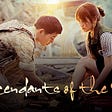Race to the blue-and-white throne: A beginner’s guide to the Israeli election 2022
TLDR: Israel has yet another election, happening on 1st November. There are a bewildering array of parties to choose from. Key talking points are Bibi — love him or loathe him; religion vs. state; and how to solve the old conundrum of two peoples and one land. Left, Right, Up, Down … which party gets your pick?
Another election, you say?
- There is an election coming up on Tuesday, 1 November 2022. Keep your diaries clear!
- What happened? The current government, formed in June 2021, collapsed over its failure to renew an emergency law that preserves the two-tier legal system in the West Bank (with Israeli civil law applying to Jewish settlers living in settlements, while military law applies to Palestinians). Because the Knesset is due to dissolve the emergency law is automatically renewed until after the formation of a new government.
- Surprisingly, the government lasted even this long (over a year), given that it’s a motley crew coalition of 8 parties — including elements from the nationalist hard-right, liberals, and even an Arab faction.
Democracy and elections: too much of a good thing?
The upcoming election will be Israel’s fifth in less than four years. What’s behind this?
One big factor is that Israel uses the Proportional Representation system of voting; which means that every vote is counted in the final result. There are 120 seats in the Knesset up for grabs, and as long as a party passes the threshold (1.5% of the vote), they are eligible to get a seat. Whilst it can be argued that PR is the most democratic of all the systems it can lead — as is the case with Israel — to a fragmented final result. Smaller parties are a natural by-product and the inevitable need for a coalition government.
Why does Israel rely on the PR system? It’s a legacy from the old days of the Yishuv (pre-State of Israel) where there were many different voices and personalities in the Jewish population, as well as radical changes and mass immigration. In such a volatile situation — and to ensure all the factions had a a voice — the PR system made the most sense.
As you can see from the chart below, the UK and the USA have a very different party landscape compared to Israel. The UK divides itself into constituencies (districts), with each one choosing just one Member of Parliament; the US Presidential election is based on the Electoral College with each State — in almost all cases — choosing all of its members to be either Democrat or Republican (“winner takes all”).
Meet the parties! (but not the fun sort…)
Can you ever have too many parties? Yes! In Israel, there are so many parties (currently 13, and who knows how many splits are still to come?), that it can be helpful to group them into themes. I have attempted to do this as follows, bearing in mind that these groups are fluid and overlapping and should be treated as directional only.
Note: [X] indicates the current number of seats.
The Right-wingers on land/security:
- Likud [29]: Led by Benjamin (Bibi) Netanyahu, it is the biggest single party. It takes a tough stance on national security and is pro-settlement of the West Bank. Secular, but believes in keeping the religious status quo.
- Yisrael Beiteinu [7]: Led by Avigdor Lieberman, it has a base of Russian-speaking voters, and takes a hard line on the peace process. Yes to Judaism, but no to religious coercion — e.g. it wants to break the monopoly of the Chief Rabbinate on marriages and conversions.
- Zionist Spirit [4]: Merger of Yamina — a coalition of right-wing parties, standing for the land of Israel and Jewish Heritage; and Derekh Eretz a centrist-right party. Led by Ayelet Shaked.
The Centrists:
- Yesh Atid [17]: The party for the secular middle class, believes in extending the military draft to all (including Charedim), improving LGBT rights, and halting the construction of Settlements — Two State Solution but keeping the large Israeli blocs. Led by Yair Lapid.
- National Unity [15]: Led by Benny Gantz, it’s a party about compromises — e.g. yes to public transport on Shabbat, but details to be decided locally. Regarding land, it recognises that neither the left (give back Jewish territories) nor the right (annexation) can happen, and needs something in the middle.
The religious parties:
- Shas [9]: This is the party for Sephardim, whether black-hat or the more traditional type. I recently got a YouTube advert from Shas featuring a sefardi-looking chap, with kippa and tattoos complaining about the price of food in the supermarket. Led by Aryeh Deri.
- UTJ [7]: Led by Moshe Gafni, it is a non-zionist party comprising Agudat Yisrael for the Chasidim and Degel HaTorah for Lithuanian charedim. The union is at risk of splitting for the first time in 30 years over a row on education and the extent of government funding vs. curriculum control.
- Religious Zionist [6]: Strongly religious — opposes same-sex marriage — and strongly right wing on land, favouring annexation of some/all of the West Bank. Led by Bezalel Smotrich.
- Noam [1]: Led by Dror Aryeh, its purpose is to protect traditionalist Jewish values: anti-LGBT rights, maintaining Shabbat as a national day of rest, and keeping the Orthodox conversion process.
The Left-wingers:
- Labor [7]: Advocates for strong social welfare programs, liberal (gay rights, legalizing cannabis, some public transport on Shabbat), supports a demilitarised Palestinian State. Led by Merav Michaeli.
- Meretz [6]: Left-wing, emphasises a Two State Solution to the Israeli–Palestinian conflict, social justice, human rights (especially for religious, ethnic and sexual minorities), religious freedom and environmentalism. Led by Zehava Gal-On.
The Arab parties:
- Joint List [6]: Led by Ayman Odeh, it’s an alliance of four diverse Arab parties, including communists, socialists, feminists, Islamists, and Arab nationalists.
- Ra’am [4]: Southern branch of the Islamic Movement. Its voters are mostly religious or nationalist Israeli Arabs, and the Negev Bedouin. Advocates full political engagement to improve the lives of Arabs. Led by Mansour Abbas.
Pick a politician, any politician
In the last election, over a year ago, I decided who to vote for on the way to the polling booth. I chose the guy that had the kippah most similar to mine. Is that irresponsible? Or actually quite natural that you will identify with someone who appears similar to you?
Anyways, this got me thinking. What really makes a voter choose one candidate over another? One approach is to break this down into 3 factors: Personality — which person do you like? Affiliation — which tribe do you belong to? Ideology — what values most strongly resonate with you? These factors are, of course, overlapping. We will examine each below, as reflected in the current Israeli debate.
#Personality — which person do you like?
When it comes to personality, nobody divides opinion quite like Bibi:
- Love him: He is Israel’s longest serving Prime Minister, with 15 years in the bag. He’s seen as tough on National Security, and Israel’s economy has performed solidly under his stewardship. He is charismatic and a comfortable figure on the International stage.
- Loathe him: He is power-hungry and will do anything to keep/get back his grip on the reins of power. Starting in December 2016, Bibi was investigated by the police leading to an indictment in November 2019 for breach of trust, accepting bribes, and fraud. In plain English: he received valuable gifts (bribes?) from wealthy friends and did favours for powerful people (in the media) in return for personal gain.
#Affiliation — which tribe do you belong to?
Beyond which politician a voter likes, or their core values, they may pick a party based on the tribe they belong to, in other words, social/societal pressure. For example: If you are sefardi and go to a synagogue where everyone wears black hats, you will gravitate towards Shas; if you live in a Religious Zionist Settlement in the West Bank, the Religious Zionist would be a natural choice.
#Ideology — what values most strongly resonate with you?
The two big topics on the ideological front are Land and Religion. Let’s look at each of these in turn.
********Land**********
- The Israeli-Palestinian conflict is one of the world’s longest-running and most controversial conflicts.
- Two-minute history crash-course: Following World War 2, Palestine, as it was called, was governed by the British, and was inhabited by both Jews and Arabs. In 1947, the United Nations came up with the Partition Plan, awarding 55% of the land to Jews, and the rest to the Arabs. In 1948, the Jewish people declared their State of Israel, the Arabs waged war, and the Jews won and ended up with even more land — 78%. In 1967, Arab countries waged the Six Day War, Israel won, again, and then took control of the Arab areas — the Gaza Strip and the West Bank — the “Occupied Territories”. Israel pulled out of the Gaza Strip in 2005, and it is now ruled by the militant Hamas organisation; Israel’s control is limited to who goes in and out — by air, land, and sea. The West Bank is more complex: ~650K Jews live there in 140 settlements — Efrat, Modi’in Ilit, and Ma’ale Adumim, to name a few. That’s close to 10% of the Israeli Jewish population (!). The rest of the West Bank is controlled by Israel with some limited civil control in the hands of Fatah.
- What are the options: left and right? If you are on the left you may favour withdrawing completely from the West Bank, and allowing the Palestinians to set up their own state, combined with Gaza as well. This would give nightmares to a right-winger who would argue on grounds of national security, or the ancient Jewish right to the whole land, that this would be a disaster. Instead, the settlement building should be expanded. Maybe even formal annexation of parts or all of the West Bank with mainland Israel. When rockets are fired from Gaza, the response would be swift and devastating. The centrist would argue that a Two State Solution might work but needs certain conditions to ensure Israel’s safety e.g. Israeli control of airspace, demilitarization, keeping large Israeli blocs on the West Bank intact etc.
*********Religion********
- On the one hand, the Israeli Declaration of Independence refers to ‘the right of the Jewish people to rebuild its National Home”’. “Jewish-ness” can be seen as an integral part of the character of the country.
- On the other hand, a massive ~40% of the Jewish population of Israel today identifies as Secular. These people are not religious yet are boxed in by certain religious constraints. For example, they cannot catch a bus on Shabbat or an El Al flight, or go to their local supermarket, and they must get married through an Orthodox Rabbi. Is this fair?
- What are the options: left and right? The left-winger seeks to weaken the Jewish-ness aspect of the State: let businesses be open on Shabbat; let the buses move and the planes take off; why shouldn’t the Ultra-Orthodox also serve in the army?; why shouldn’t a same-sex couple be allowed to marry within Israel? Why are the government subsidising Yeshiva students? Live and let live! The right-winger, simply put, argues the opposite, as well as seeks to push even further. A centrist may argue that the status quo is the way to go; no radical changes in either direction.
Here’s an attempt to map out the parties on an Ideological Matrix (is that even a thing?). Note it’s a bit of an art (more than a science) to get the placements right — welcome any feedback/corrections to this. Please drop them in the comments.







